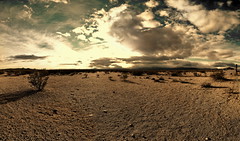lazySizes
lazySizes is the ultimate and lightweight lazyLoader which lazy loads images (including responsive images (picture/srcset)), iframes and scripts. It is written in VanillaJS and with high performance in mind.
Simply add the JS to your website and put the class lazyload to all elements, which should be lazy loaded. For a short API description go to the readme.md.

Image with LQIP technique
The low quality image placeholder pattern is a performance technique. While it might increase measuered time until the onload event, it dramatically increases percieved performance.
This pattern is recommend for above the fold/crictical images.
<img alt="100%x200" src="low-quality.jpg" data-src="normal-quality.jpg" class="lazyload" />

Normal lazy image
The normal image pattern is can be used for non-critical images or in case there is no low quality image available:
<img class="lazyload" data-src="image.jpg" alt="Desert Road" />

responsive image with srcset and sizes attribute
Simply use data-srcset and data-sizes and you can support responsive images.
<img alt="" src="small.jpg" sizes="(min-width: 1000px) 930px, 90vw" data-srcset="small.jpg 500w, medium.jpg 640w, big.jpg 1024w" class="lazyload" />
responsive image with the picture element
The picture element is also supported. Simply add the lazyload class to the img and use data-srcset on your source and the img element.
<picture> <!--[if IE 9]><video style="display: none"><![endif]--> <source data-srcset="500.jpg" media="(max-width: 500px)" /> <source data-srcset="1024.jpg" media="(max-width: 1024px)" /> <source data-srcset="1200.jpg" /> <!--[if IE 9]></video><![endif]--> <img src="data:image/gif;base64,R0lGODlhAQABAAAAACH5BAEKAAEALAAAAAABAAEAAAICTAEAOw==" class="lazyload" alt="image with artdirection" /> </picture>
automatic sizes feature: In case of lazy loading images the sizes attribute of the img/source elements can be calculated with JS.
This automatic sizes feature is directly included in lazySizes. Simply use the keyword auto inside of the data-sizes attributes (data-sizes="auto").
Important: How sizes is calculated: The automatic sizes calculation takes the width of the image if it is over 40 (see also minSize option). In case it's below the minSize threshold, it traverses up the DOM tree until it finds a parent which is over 40 and uses this number. Often the following general CSS rule might help: img[data-sizes="auto"] { display: block; }.

responsive image with srcset and automatic sizes attribute
The autosizes feature makes using responsive images with the right sizes value easy as hell.
<img alt="" data-sizes="auto" src="small.jpg" data-srcset="small.jpg 500w, medium.jpg 640w, big.jpg 1024w" class="lazyload" />
For responsive images support you must use either use a full polyfill like picturefill or respimage or use the extreme lightweight partial respimg polyfill plugin or use the Responsive Images as a Service extension.
iframe
Iframes can be loaded too:
<iframe data-src="//www.youtube.com/embed/ZfV-aYdU4uE" class="lazyload" frameborder="0" allowfullscreen></iframe>
Widgets/Javascript/Script
LazySizes can be extended to load nearly everything lazily. The ls.unveilhooks.js plugin can be used to lazy load scripts, background images, and videos. Simply add a data-script to your widget and you are done:
<div data-ride="carousel" data-script="assets/js/bootstrap.min.js" class="carousel lazyload"> <!-- widget content --> <div>














While other lazy loaders or responsive images solution need to be called, if new elements are added to the DOM or do become visible through a special user interaction or a JavaScript behavior.
LazySizes does automatically detect any changes to the DOM and the visibility of .lazyload elements.